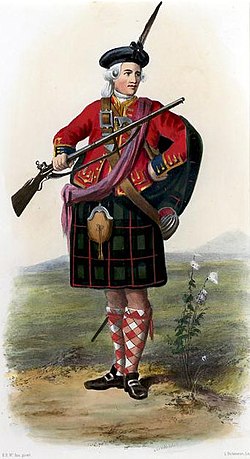| Clan Shaw | |||
|---|---|---|---|
| Mac Ghille Sheathanaich [1] | |||
 Crest: A Dexter Arm, the hand holding the dagger, pale, proper | |||
| Motto | Fide et fortitudine (By fidelity and fortitude) [1] | ||
| War cry | "Na Bean Ris A Chat" (Touch not the cat) | ||
| Profile | |||
| Region | Highland | ||
| District | Strathspey [1] | ||
| Plant badge | Red whortleberry [1] | ||
| Pipe music | The Rothiemurchus Rant, The Shaws March | ||
| Chief | |||
 | |||
| Landon Shaw of Tordarroch [1] | |||
| Historic seat | Doune of Rothiemurchus [2] | ||
| |||
| |||
| |||
Clan Shaw is a Highland Scottish clan and is a member of the Chattan Confederation. [3]

